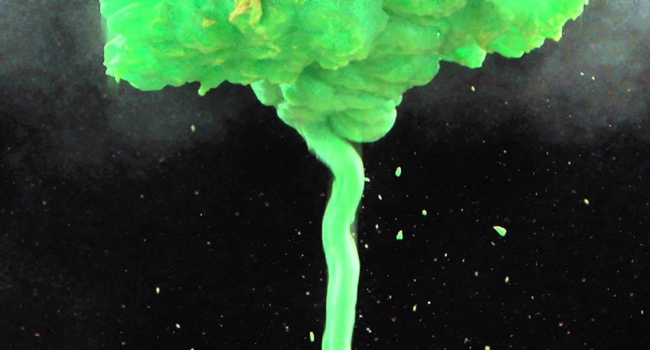100. The Books – The Lemon of Pink (2003):

The Books’ guitarist and vocalist, Nick Zammuto, has described his duo’s style of music as “collage music,” rejecting the label of “aleatoricism” that’s often attached to their albums. The Lemon of Pink is a great example of why aleatoricism is in fact the wrong term to apply to The Books. Very much controlled and not at all left to chance, The Lemon of Pink is made up of 13 tracks, each unique in its own “collage,” taking sound clips from vintage tapes and various toys, and focusing strongly on complicated rhythms and precise, frequent looping. The album also features guest vocalist, Anne Doerner—a woman whose voice can only be described as “soulful as all heck”—which helped garner a good amount of the album’s critical acclaim. Its conceptual glory, however, still shines in the post-mp3 wreckage. –Kelly Baron
99. Beck – Sea Change (2002):

While Odelay may be the greatest testament to the genius of Beck, it is Sea Change that reveals his depth. Off the heels of a breakup, Beck composed this set of ballads and soft rock standing in contrast to his already diverse catalogue. With the aid of producer Nigel Godrich, Beck’s simple tunes gain extra richness, but at the core of its 12 tracks is an weary soul that could have sold this record with just an acoustic guitar and a voice. But, considering this is a breakup album, it’s not bitter so much as it is comforting and consoling and it’s not so much a personal album as it is Beck empathizing with all of the broken hearts of the world on a personal level. It’s an album that will mean something to everybody at some point in their lives and that, remarkably, only partly sums up the brilliance of Sea Change. -Chris Favata
98. Battles – Mirrored (2007):
 From Ian Williams’ wild guitar looping to John Stainer’s huge drums and Tyondai Braxton’s outrageous vocal work, the “supergroup” Battles’ first album, Mirrored, was a sonic treasure trove. Filled with previously untapped tones and styles, the quartet created a progressive pop sound as perplexing as it was exciting. Never foregoing melody for innovation, the album features endlessly catchy tracks like “Atlas” in which Braxton’s treated vocals lay down a tune as fun to sing as it is to come up with the words for. Elsewhere, the band lays down angular but groovy jams which serve as evolutions from the members’ previous groups. The result is a collection of songs that display astounding musicianship but also fit perfectly on LittleBigPlanet. Who knew an album this complex and futuristic could be so fun? –Chris Favata
From Ian Williams’ wild guitar looping to John Stainer’s huge drums and Tyondai Braxton’s outrageous vocal work, the “supergroup” Battles’ first album, Mirrored, was a sonic treasure trove. Filled with previously untapped tones and styles, the quartet created a progressive pop sound as perplexing as it was exciting. Never foregoing melody for innovation, the album features endlessly catchy tracks like “Atlas” in which Braxton’s treated vocals lay down a tune as fun to sing as it is to come up with the words for. Elsewhere, the band lays down angular but groovy jams which serve as evolutions from the members’ previous groups. The result is a collection of songs that display astounding musicianship but also fit perfectly on LittleBigPlanet. Who knew an album this complex and futuristic could be so fun? –Chris Favata
97. The Mars Volta – De-Loused in the Comatorium (2003):
 Hard rock was in a bad way in the early aughts, and emo—for better or worse—was dominating the hardcore punk world. Luckily, remnants of hardcore group At the Drive-In—Omar Rodríguez-López and Cedric Bixler-Zavala—formed The Mars Volta, and released De-Loused in the Comatorium, an album whose volatile lyrics, toxic chord progressions and apocalyptic drumbeats delivered a fresh kick in the groin to both genres and a built a fresh conduit to progressive rock. De-Loused not only preserved the venomous tendencies of López’s musicianship and the vocals of adder-tongued Zavala, but introduced a group no longer satisfied with simple chords, simple lyrics, simple rhythms—simple anything. –Ciara Shook
Hard rock was in a bad way in the early aughts, and emo—for better or worse—was dominating the hardcore punk world. Luckily, remnants of hardcore group At the Drive-In—Omar Rodríguez-López and Cedric Bixler-Zavala—formed The Mars Volta, and released De-Loused in the Comatorium, an album whose volatile lyrics, toxic chord progressions and apocalyptic drumbeats delivered a fresh kick in the groin to both genres and a built a fresh conduit to progressive rock. De-Loused not only preserved the venomous tendencies of López’s musicianship and the vocals of adder-tongued Zavala, but introduced a group no longer satisfied with simple chords, simple lyrics, simple rhythms—simple anything. –Ciara Shook
96. Coldplay – Parachutes (2000):
 It is difficult to discuss Parachutes without a mention of “Yellow,” the song that started it all, catapulting Coldplay into a decade of worldwide fame. And “Yellow” is a fine song, perfecting the art of the Britpop ballad, an idea formed in the ’90s by bands such as Oasis, The Verve and Travis. The lasting success of Parachutes, however, really has nothing to do with “Yellow.” The album seems almost effortless in its simplicity. It lacks the studio wizardry of Coldplay’s later albums, and this is welcome, for it shows Coldplay for what they are at the core: An immensely talented and relatable band that consistently writes better songs than pretty much everybody else out there. –Derek Gossi
It is difficult to discuss Parachutes without a mention of “Yellow,” the song that started it all, catapulting Coldplay into a decade of worldwide fame. And “Yellow” is a fine song, perfecting the art of the Britpop ballad, an idea formed in the ’90s by bands such as Oasis, The Verve and Travis. The lasting success of Parachutes, however, really has nothing to do with “Yellow.” The album seems almost effortless in its simplicity. It lacks the studio wizardry of Coldplay’s later albums, and this is welcome, for it shows Coldplay for what they are at the core: An immensely talented and relatable band that consistently writes better songs than pretty much everybody else out there. –Derek Gossi
95. The National – Alligator (2005):
 It was a slow build for Brooklyn by-way-of Cincinnati’s The National in order for it to become an indie-rock darling. After two Americana-inspired albums—and an EP that suggested a new direction—the group emerged with Alligator, an album that puts a spotlight on the band’s strongest elements. Orchestrating itself around vocalist Matt Berninger’s gloomy tales and deep baritone, The National transforms songs into standalone epics through the use horns and strings atop traditional rock instrumentation. Berninger’s dark persona permeates much of Alligator, only taking a backseat when the band kicks into sing-along anthems such as “Mr. November.” The National would continue to build on this template, but this is the moment when it first stood on its own two feet. –David Anthony
It was a slow build for Brooklyn by-way-of Cincinnati’s The National in order for it to become an indie-rock darling. After two Americana-inspired albums—and an EP that suggested a new direction—the group emerged with Alligator, an album that puts a spotlight on the band’s strongest elements. Orchestrating itself around vocalist Matt Berninger’s gloomy tales and deep baritone, The National transforms songs into standalone epics through the use horns and strings atop traditional rock instrumentation. Berninger’s dark persona permeates much of Alligator, only taking a backseat when the band kicks into sing-along anthems such as “Mr. November.” The National would continue to build on this template, but this is the moment when it first stood on its own two feet. –David Anthony
94. Sonic Youth – Murray Street (2002):
 “From dust to dust, they created rock ‘n’ roll,” Thurston Moore sings on Murray Street, and that’s exactly what these No Wave guitar terrorists did on their 12 album. Named for their studio which was literally around the corner from where the two towers fell more than 10 years ago, this was more than just another Sonic Youth record. Murray Street was a requiem, a subtle raging in the dying of the light, a poem of missed opportunities and miscommunication. The release was also a new chapter in the band’s development, being the first to feature post-rock innovator Jim O’Rourke as a fifth member. Although their discography has always been eclipsed by their classic double album, Daydream Nation, this was the record that awoke them from their daydream and found them in a fully-formed nightmare. As Moore sings at the end of “Disconnection Notice,” “see how easily it all slips away.” – Craig Bechtel
“From dust to dust, they created rock ‘n’ roll,” Thurston Moore sings on Murray Street, and that’s exactly what these No Wave guitar terrorists did on their 12 album. Named for their studio which was literally around the corner from where the two towers fell more than 10 years ago, this was more than just another Sonic Youth record. Murray Street was a requiem, a subtle raging in the dying of the light, a poem of missed opportunities and miscommunication. The release was also a new chapter in the band’s development, being the first to feature post-rock innovator Jim O’Rourke as a fifth member. Although their discography has always been eclipsed by their classic double album, Daydream Nation, this was the record that awoke them from their daydream and found them in a fully-formed nightmare. As Moore sings at the end of “Disconnection Notice,” “see how easily it all slips away.” – Craig Bechtel
93. Common – Be (2005):
 Common, who had made a name for himself in hip-hop with a compelling mix of jazzy neo-soul and vibrant lyricism, took an experimental left-turn with his 2002 release, Electric Circus. Neither the public nor Common was happy with the bloated final product, so the Chicago MC went back to the drawing board for 2005 effort Be, this time with that other Chicago MC, Kanye West. West, who produced nine of the album’s 11 tracks, brings to the table the same economic aesthetic that made his work on Jay-Z’s The Blueprint the stuff of legends. Be is, for the lack of better words, all killer and no filler. From the profound lyricism (“As men we were taught to hold it in/That’s why we don’t know how ’til we’re older men/If love is a place I’m a go again/At least now, now I know to go within,”) to the flawless production, Be hits all the right notes. –John Taylor
Common, who had made a name for himself in hip-hop with a compelling mix of jazzy neo-soul and vibrant lyricism, took an experimental left-turn with his 2002 release, Electric Circus. Neither the public nor Common was happy with the bloated final product, so the Chicago MC went back to the drawing board for 2005 effort Be, this time with that other Chicago MC, Kanye West. West, who produced nine of the album’s 11 tracks, brings to the table the same economic aesthetic that made his work on Jay-Z’s The Blueprint the stuff of legends. Be is, for the lack of better words, all killer and no filler. From the profound lyricism (“As men we were taught to hold it in/That’s why we don’t know how ’til we’re older men/If love is a place I’m a go again/At least now, now I know to go within,”) to the flawless production, Be hits all the right notes. –John Taylor
92. The Shins – Wincing the Night Away (2007):
 Although The Shins may not change your life, as Natalie Portman would have you believe, they will confirm that you aren’t the only one who suffers from insomnia with Wincing the Night Away. Singer/songwriter/guitarist James Mercer is open about his insomnia and has been quoted as saying he explored the human condition with album. The band explores new territory with different textures and additional electric layers, resulting in their most lush, diverse album to date. It might not be chocked with Billboard No. 1 hits, but it is full of unique sounds and long-lasting lyrics. The Shins upped their ante with Wincing the Night Away in a darker, more somber way. –Alex Peak
Although The Shins may not change your life, as Natalie Portman would have you believe, they will confirm that you aren’t the only one who suffers from insomnia with Wincing the Night Away. Singer/songwriter/guitarist James Mercer is open about his insomnia and has been quoted as saying he explored the human condition with album. The band explores new territory with different textures and additional electric layers, resulting in their most lush, diverse album to date. It might not be chocked with Billboard No. 1 hits, but it is full of unique sounds and long-lasting lyrics. The Shins upped their ante with Wincing the Night Away in a darker, more somber way. –Alex Peak
91. of Montreal – Hissing Fauna, Are You the Destroyer? (2007):
 It was 2006, and Kevin Barnes was struggling with depression. For the first time in his career, his project of Montreal was starting to emergence in mainstream consciousness. Even one of the tracks from his 2005 release The Sunlandic Twins had made its way into an Outback Steakhouse commercial. But Barnes was unhappy; in an interview with About.com he disclosed, “I was going through this horrible period, emotionally, and I needed to find some way to transcend the experience, and make it more positive. Because it was destroying me.” So what’s a songwriter to do? Obviously, make a concept album about transforming into an African-American transsexual named Georgie Fruit. Hissing Fauna, Are You the Destroyer? is the wildest, weirdest, and arguably the best work the Elephant 6 member has put out. Unapologetically diving straight into glam rock, Hissing Fauna recalls the best bits of Prince and Bowie and their creative (and sexual) peaks. –John Taylor
It was 2006, and Kevin Barnes was struggling with depression. For the first time in his career, his project of Montreal was starting to emergence in mainstream consciousness. Even one of the tracks from his 2005 release The Sunlandic Twins had made its way into an Outback Steakhouse commercial. But Barnes was unhappy; in an interview with About.com he disclosed, “I was going through this horrible period, emotionally, and I needed to find some way to transcend the experience, and make it more positive. Because it was destroying me.” So what’s a songwriter to do? Obviously, make a concept album about transforming into an African-American transsexual named Georgie Fruit. Hissing Fauna, Are You the Destroyer? is the wildest, weirdest, and arguably the best work the Elephant 6 member has put out. Unapologetically diving straight into glam rock, Hissing Fauna recalls the best bits of Prince and Bowie and their creative (and sexual) peaks. –John Taylor



